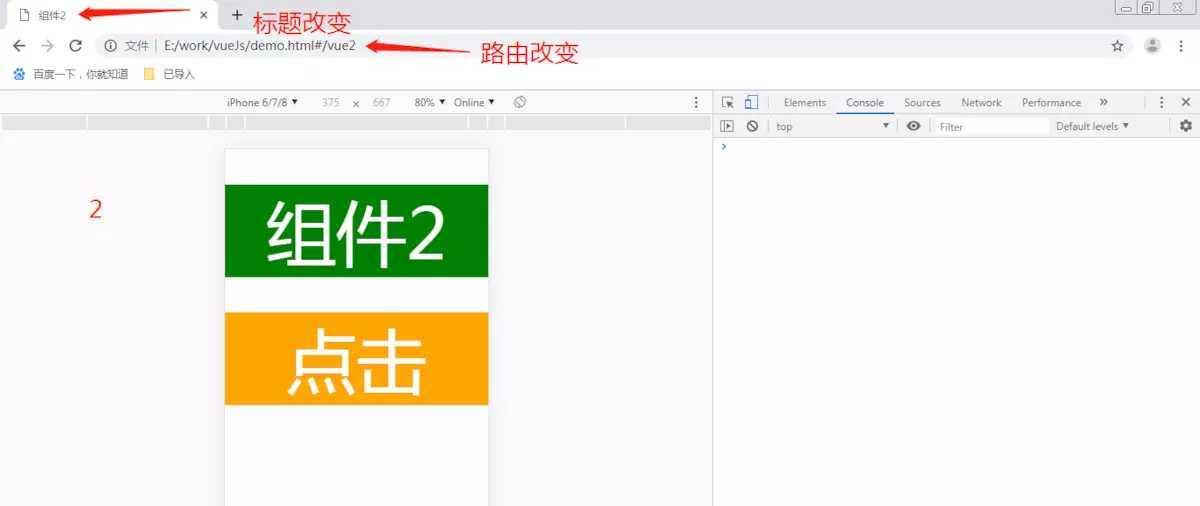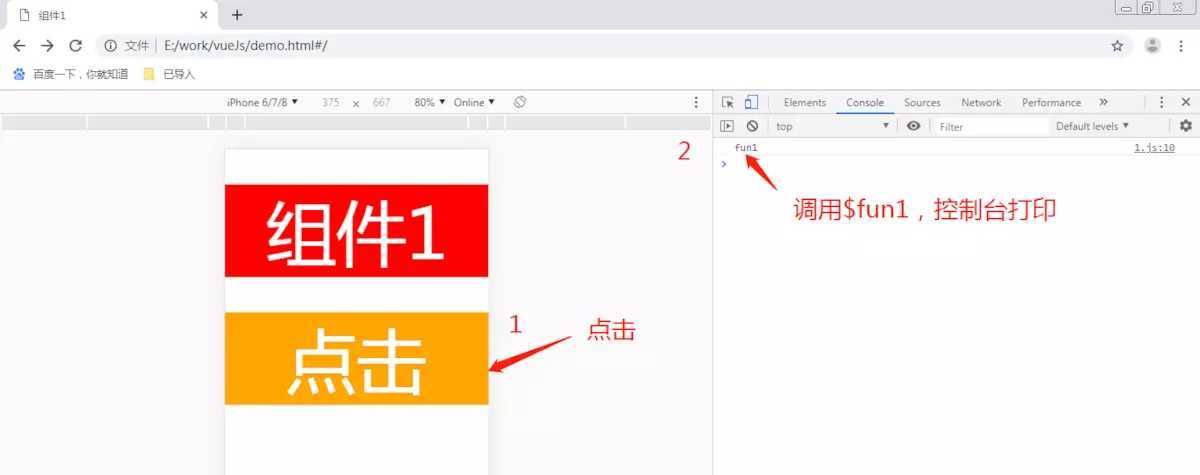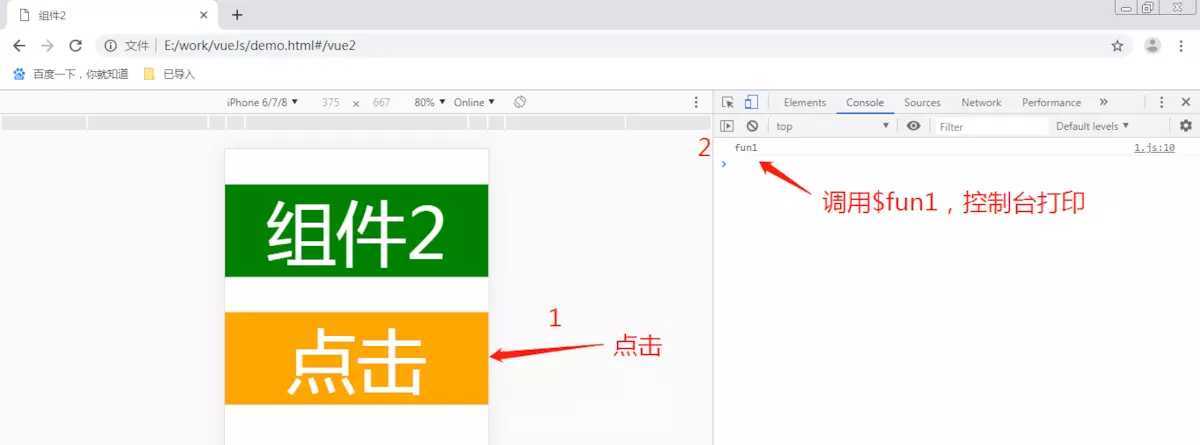标签:target 通过 ros 注入 path red acs tran osi
拆分组件为单个js见:https://www.jianshu.com/p/2f0335818ceb
效果:




html:
<!DOCTYPE html>
<html>
<head>
<meta charset="UTF-8">
<meta name="viewport" content="width=device-width, initial-scale=1.0, maximum-scale=1.0, user-scalable=0">
<title>js引入vue.js实现vue</title>
<link rel="stylesheet" href="css/1.css">
<script src="js/jquery.js"></script>
<script>
function htmlFont(standardWid) {
var explorer = navigator.userAgent,
html = document
.getElementsByTagName(‘html‘)[0];
standardWid = (typeof standardWid == ‘number‘) ? standardWid : 375;
if (explorer.indexOf("Opera") >= 0) {
winwid = screen.width;
} else {
winwid = html.offsetWidth;
}
if (winwid > 750) {
fosi = 200;
} else {
winwid = winwid > standardWid * 2 ? standardWid * 2 : winwid;
fosi = winwid / standardWid * 100;
}
html.style.fontSize = fosi + ‘px‘;
}
htmlFont();
</script>
<script src="https://cdn.staticfile.org/vue/2.4.2/vue.min.js"></script>
<script src="https://cdn.staticfile.org/vue-router/2.7.0/vue-router.min.js"></script>
<script src="js/1.js"></script>
</head>
<body>
<div id="app" v-cloak>
<transition :name="transitionName">
<keep-alive>
<router-view class="child-view" v-if="$route.meta.keepAlive"></router-view>
</keep-alive>
</transition>
<transition :name="transitionName">
<router-view class="child-view" v-if="!$route.meta.keepAlive"></router-view>
</transition>
</div>
</body>
</html>
js:
‘use strict‘; $(document).ready(function() { // 0. 如果使用模块化机制编程,導入Vue和VueRouter,要调用 Vue.use(VueRouter) Vue.use(VueRouter); // 1. 定义(路由)组件。 // 可以从其他文件 import 进来 Vue.prototype.$fun1 = function() { //全局函数1 console.log(‘fun1‘); }; var Vue1 = Vue.extend({ data() { return {} }, computed: {}, methods: { toVue2: function() { this.$router.push({ name: ‘Vue2‘ }) } }, template: "<div class=‘d-vue1‘><p class=‘redBc‘ @click=‘toVue2‘>组件1</p>" + "<p class=‘orangeBc‘ @click=‘$fun1‘>点击</p></div>" }) Vue.component(Vue1) const Vue2 = Vue.extend({ template: "<div class=‘d-vue2‘><p class=‘greenBc‘>组件2</p>" + "<p class=‘orangeBc‘ @click=‘$fun1‘>点击</p></div>" }) Vue.component(Vue2) // 2. 定义路由 // 每个路由应该映射一个组件。 其中"component" 可以是 // 通过 Vue.extend() 创建的组件构造器, // 或者,只是一个组件配置对象。 const routes = [{ path: ‘/‘, component: Vue1 }, { path: ‘/vue2‘, component: Vue2 } ] // 3. 创建 router 实例,然后传 `routes` 配置 const router = new VueRouter({ routes: [{ path: ‘/‘, name: ‘Vue1‘, meta: { index: 0, keepAlive: true, title: ‘组件1‘ }, component: Vue1 }, { path: ‘/vue2‘, name: ‘Vue2‘, meta: { index: 1, keepAlive: false, title: ‘组件2‘ }, component: Vue2 } ] }) router.beforeEach((to, from, next) => { const toDepth = to.meta.index; const fromDepth = from.meta.index; if (to.meta.title) { document.title = to.meta.title; } if (toDepth < fromDepth) { //返回 from.meta.keepAlive = false; to.meta.keepAlive = true; //相当于缓存 } next() }) // 4. 创建和挂载根实例。 // 记得要通过 router 配置参数注入路由, // 从而让整个应用都有路由功能 const app = new Vue({ el: ‘#app‘, data: { transitionName: ‘‘ }, watch: { $route(to, from) { if (to.meta.index > from.meta.index) { this.transitionName = ‘slide-left‘; } else { this.transitionName = ‘slide-right‘; } } }, router }).$mount(‘#app‘) })
css:
.child-view { position: absolute; width: 100%; transition: all .5s cubic-bezier(.55, 0, .1, 1); } .slide-left-enter, .slide-right-leave-active { opacity: 0; -webkit-transform: translate(50px, 0); transform: translate(50px, 0); } .slide-left-leave-active, .slide-right-enter { opacity: 0; -webkit-transform: translate(-50px, 0); transform: translate(-50px, 0); } body, div, p { margin: 0; padding: 0; color: #fff; text-align: center; font-weight: 500 !important; } [v-cloak] { display: none } p { margin-top: .5rem; } .redBc { background-color: red; } .orangeBc { background-color: orange; } .greenBc { background-color: green; }
若需请求接口,html增加引入:
<script src="https://cdn.staticfile.org/axios/0.18.0/axios.min.js"></script>
使用:
function getData(){ var param1 = { param: { id:‘1‘, sex:‘male‘ } } axios.get( "url", {params: param1}).then(function (res) { //url为请求接口, 当请求需要参数为JSON数据时 // axios.get( "url?param2="+"XXX").then(function (res) { //当请求参数无需用JSON时,param2为请求需要参数 if (res.status == 200 && res.data.result == 0) { var _data = res.data.message; }else{} }) .catch(function (error) { console.log(error); }); }
‘use strict‘;
$(document).ready(function() {
// 0. 如果使用模块化机制编程,導入Vue和VueRouter,要调用 Vue.use(VueRouter)
Vue.use(VueRouter);
// 1. 定义(路由)组件。
// 可以从其他文件 import 进来
Vue.prototype.$fun1 = function() { //全局函数1
console.log(‘fun1‘);
};
var Vue1 = Vue.extend({
data() {
return {}
},
computed: {},
methods: {
toVue2: function() {
this.$router.push({
name: ‘Vue2‘
})
}
},
template: "<div class=‘d-vue1‘><p class=‘redBc‘ @click=‘toVue2‘>组件1</p>" +
"<p class=‘orangeBc‘ @click=‘$fun1‘>点击</p></div>"
})
Vue.component(Vue1)
const Vue2 = Vue.extend({
template: "<div class=‘d-vue2‘><p class=‘greenBc‘>组件2</p>" +
"<p class=‘orangeBc‘ @click=‘$fun1‘>点击</p></div>"
})
Vue.component(Vue2)
// 2. 定义路由
// 每个路由应该映射一个组件。 其中"component" 可以是
// 通过 Vue.extend() 创建的组件构造器,
// 或者,只是一个组件配置对象。
const routes = [{
path: ‘/‘,
component: Vue1
},
{
path: ‘/vue2‘,
component: Vue2
}
]
// 3. 创建 router 实例,然后传 `routes` 配置
const router = new VueRouter({
routes: [{
path: ‘/‘,
name: ‘Vue1‘,
meta: {
index: 0,
keepAlive: true,
title: ‘组件1‘
},
component: Vue1
},
{
path: ‘/vue2‘,
name: ‘Vue2‘,
meta: {
index: 1,
keepAlive: false,
title: ‘组件2‘
},
component: Vue2
}
]
})
router.beforeEach((to, from, next) => {
const toDepth = to.meta.index;
const fromDepth = from.meta.index;
if (to.meta.title) {
document.title = to.meta.title;
}
if (toDepth < fromDepth) { //返回
from.meta.keepAlive = false;
to.meta.keepAlive = true; //相当于缓存
}
next()
})
// 4. 创建和挂载根实例。
// 记得要通过 router 配置参数注入路由,
// 从而让整个应用都有路由功能
const app = new Vue({
el: ‘#app‘,
data: {
transitionName: ‘‘
},
watch: {
$route(to, from) {
if (to.meta.index > from.meta.index) {
this.transitionName = ‘slide-left‘;
} else {
this.transitionName = ‘slide-right‘;
}
}
},
router
}).$mount(‘#app‘)
})标签:target 通过 ros 注入 path red acs tran osi
原文地址:https://www.cnblogs.com/linjiangxian/p/11460870.html